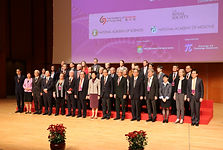Bruciaga AP Research
Adenine: Gel Electrophoresis; Analysis
















CONTEXT
Beginning in 1953, the structure of DNA was discovered. From then on, scientists and researchers alike have found ways to genetically modify not only plants, but humans. Recently there has been numerous ethical debates and concerns on how this will change humanity. By analyzing 7 science-fiction novels a parallel of consistent ethical themes/ concerns can be drawn spanning from 1932-2011. Now using gel electrophoresis the analysis can begin.
-
While analyzing each book it was important to note perceptions of attitudes towards genetic engineering have shifted or stayed the same over time.
-
This analysis on literature can bring to the table different perspectives/possibilities that may need to be addressed as science progresses in the realm of genetic engineering towards human
-
While no longer is it only affecting our foods and animals, a higher level of scrutiny is necessary to ethically and responsibly address the possible outcomes that come along with a higher modification of DNA.
-
As mentioned by numerous literary professors and authors, literature is a reflection of society. Thus, by contextualizing the concerns in the science-fiction novels over multiple decades can guide International Summits held worldwide concerning the gene editing implementation in humans.
Overall the contextual research I’ve conducted in terms of the ethicality of gene editing shows a majority of both scientists and the public being against this proposal. This concern has not shifted much since the discovery of DNA with many individuals fearing the rise of a possible “genocide” towards “natural” humans. A source of concern mainly comes from germline gene editing which has the potential not only to alter an individual, but their future offspring as well. Nonetheless, there has been a general consensus of agreeing that genetic engineering may have the potential to eliminate genetic diseases. Yet, many fear that the concerns of individuality and society/destruction of humanity override the benefit of curing genetic disease. Correlating this to my research in analyzing science-fiction novels, it has been shown multiple times how these same ethical principles that the public holds now are reflected within the novel itself.
As to date, there are limited studies that cover themes in genetic engineering books. Out of the research I have conducted, there seems to be only 3-4 academic articles covering a single book and how themes are portrayed within it. Yet, in this research there has been no other research that covers multiple books beginning in 1932 spanning to 2011.
Nonetheless, there has also been no other research done in comparing a multitude of genetic engineering science fiction novels in humans to the larger conversation of international summit debates and ethical concerns. An effort has also been made to avoid books already previously researched. Still, some books such as Brave New World, that have been researched before, have never been placed into conversation with multiple authors and then correlated to current international summits held almost 80 years later.
In the beginning of my methodology I planned on reading 8 science-fiction novels selected by certain criteria which resulted in 8 selections all spanning roughly within a decade of one another. This has stayed the same, except for the exclusion of the last book due to time constraints. After obtaining the books, highlighting themes was the method I would be conducting with themes coming from the International Summit on Human Gene Editing in 2015 then 2019. These highlighters included Negative Treatment in Normal/Genetic, Positive Treatment in Normal/Genetic, Consequences of Genetic engineering, and Individualism/Society/Dignity/Community. Mainly what has changed is the highlighting process. As I began reading there were numerous examples in which genetically modified humans turned out hating genetically modified humans, which was not expected. Which led me to make various notes in my research journal. At first, this lack of oversight occurred due to the unknown nature of what themes each book would hold. Yet, by noting them down within my research journal, now I have a possible place of reference to mention this unexpected theme. Similarly, there were various themes that came up while I was reading. Themes such as efficiency in society, and love with individualism. To cater to these new themes, the blue highlighter (Individualism/Society/Dignity/Community) was used along with a note in my research journal to help me keep track of themes that were unexpected. Now that research is done, I will be conducting a "new historicism" approach by comparing the themes in the books to the concerns in international summits. Which may lead to new research on analyzing literature and what future steps society can take to either accept or reject genetic engineering.
So far I have recently finished annotating, documenting, and highlighting 7 books. Currently I am noting down themes from the books and then comparing these to the concerns that have been outlined in the international summits for gene editing in humans. As data collection comes along, common themes will be outlined with how they have differed or stayed the same within each novel. For example, with community and efficiency, there seems to be a common theme of contributing to society instead of valuing individualism. In Brave New World once you have lived out your life, you burn your body as fuel as a “final contribution to society”. In Slan, this theme is a little more vague and therefore an outlier. In Hellstrom's Hive, there is a massive reliance on the society with individuals that can be sacrificed for the “good of the community”. In Blood music, a theme of one cohesive and “efficient society” is consistently mentioned. Etc. This analysis will be done with a statistical test to see how many times these themes in highlights were mentioned with one another. After this preliminary analysis of each novel, it can be contextualized to the larger picture of the international summits and what themes correlate to the ones outlined in the books.
Some roadblocks that have been hit were mentioned above with changing some methodology in terms of unexpected themes that I didn’t account for in the initial creation of the methodology. Another roadblock was a massive time constraint. I underestimated the amount of time that each book would take to read, highlight and annotate. In the beginning of the data collection I began by reading about one book a month. Yet once time became constrained that became 1 book every 10 days or so. Finally, it is unfortunate that I must cut out the last book in the series in order to stay on track. This will affect the data slightly yet there is still a sufficient number of books (7) spanning from 1932-2011. Nonetheless, this will give us a complete picture of themes and how they span across multiple decades along with their connection to the international summits for gene editing and other research. Although this may have slowed gel electrophoresis, analysis continued.
I have found that there has been a consistent theme spanning across these 7 science fiction novels in terms of ethical issues in genetic engineering. One theme that has been mentioned in about every book analyzed is how genetic engineering will benefit society in curing diseases and increasing youthfulness/longevity. This can be seen in Brave New World, Slan, Hellstrom’s Hive, Blood Music, Beggars in Spain, Never Let Me Go, and Upgrade. Yet, alongside this theme there has also been the consistent theme (excluding Slan) of humans who are genetically modified only being valued for their appearance and not their humanity. Similarly there is a massive emphasis in every book towards the “good of the greater society” with a disdain on individualism. In these books it has been a consistent theme of showing how valuing the society over the individual usually leads to dehumanization and dissatisfaction on humans self-perception. There also has been a consistent theme of a “caste system” within the genetic engineered humans. This was first seen in Brave New World with those who are the most “enhanced” are at the top of society and valued the most with others, usually with less desirable and natural traits, are the lowest in the society. This was also present in Slan, with smarter and dumber genetic humans, in Hellstrom’s Hive with “Hive Rulers” who are the most enhanced and then in Blood Music, with those who are a part of society and those who are transitioning into genetic alteration. In Beggars in Spain, the most intelligent genetically engineered humans are praised, while the others lower than them hate the most highly praised genetic humans. Etc. This correlates to the concern of genocide and societal differences that may come along with genetically altering humans. What was interesting to note is how once there were differences between each of the genetic, they tore each other apart as well. Moving forward it was evident that this could be highlighted as a major concern/theme in genetic engineering in humans. Nonetheless there were countless other themes such as love and individualism that were mentioned, but overall there does seem to be a common correlation between novels and how they represent what is currently being debated today.
There is a connection between science fiction novels and their themes which could highlight a massive area of discussion in moving forward in genetic engineering. If this issue has been consistently outlined both in public debates and literature, it is essential to note how this could be mitigated or avoided when it comes to implementing this new technology in human society. Some possible areas of limitations are reader bias, this can arise with interpretation of themes or issues that are outlined by the books. In order to combat this a larger team of peer-reviewing needs to be conducted. Nonetheless, these results do give way to the discussion as they are also based around objective parameters and mentions while collecting data. Another source of limitation is the last book that was excluded within the research process which may give insight to how themes may have changed within the last 10 years as more has been discovered on the impacts of these genetic engineering technologies. Nonetheless this may open up the possibility of others conducting similar research towards more current novels and current societal issues. This can range anywhere from genetic engineering to AI to disease control. This analysis with the gel can be applied in other issues
Genetic engineering is rapidly becoming a reality. In fact, in the second international summit for human genetic engineering a scientist meant to speak was found to have unethically conducted germline gene editing on a set of twins. No longer is this a distant possibility, it is an immediate reality. Yet, although we have applied this to plants and animals in the past, it is necessary to ask the question, “how will it affect humans?” With current government regulation there seems to be more research in favor of genetic engineering. Still, the societal impacts are just as important as the health impacts of genetic engineering. Therefore by taking these commonly held concerns and applying them to the discussion that is being held today, there can be a responsible discernment of how this technology will or will not be applied. Especially as this enters into legislation, it is necessary for voters to be aware of the impacts this can have on society and themselves. Mainly it comes down to the question how society will value humans, for their perfect traits or imperfect humanity?





GAP
Process
Progress
Roadblocks
Results
Discussion
Conclusion

(Harpercollins, 1932)



(Arkham House, 1946)






(Doubleday, 1973)
(Arbour House, 1985)
(William Morrow CO, 1991)
(Knofp Douday, 2005)
(Simon and Cheuster, 2011)



(International Summit for Human Gene Editing,
2015)